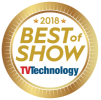
Insights and Predictions for 2021
Now that 2020 has accelerated the timing of our industry’s digital transformation, we can expect 2021 to be a continuation of similar digital trends. Many thought leaders cite the pandemic as the agent that forced our industry to move full speed ahead with automation, cloud migration, remote production and operations and virtual events. What are some other insights and predictions that will propel us further ahead in 2021?
Optimizing Cloud Usage
We’re going to see vendors even more focused on optimizing operations in the cloud. With the business decisions moving more towards an opex aligned model the focus shifts to efficiency of operations. The cloud (in general) is aligned to performing high scale transactions very efficiently. It isn’t really designed to run persistent workloads 24/7. This forces vendors and customers to work together to align utilization and cost against the overall objectives of any deployment. Additionally, the conversations shift from simple analysis of cost of a system plus hardware to the more holistic benefits of moving to cloud inclusive of security, dynamic scale and utilization. We are going to see a big focus on utilization and integration with the native services of the cloud environment(s). It is only when we use those native services to their fullest extent, blending the requirements of the media industry with the best practices and tools of the generic cloud that we will see the massive benefits we expect to happen.
It’s All About the Data
The future of our industry will be defined by how quickly we move to a data-centric model. A data centric model is defined by not only monitoring our systems and networks (QoS) but also the consumer experience (QoE). Monitoring across the network and down to the individual consumer is a requirement for moving to the direct-to-consumer (D2C) model. Knowing how the systems and networks are performing tells you more about QoE than measuring QoS alone. A focus on QoS allows you to understand, troubleshoot and address network and systems issues which may affect one or all of your customers depending on where in the network the problem exists. Even when the systems and networks are working acceptably there can be QoE impacting issues that occur anywhere in the supply chain from source to destination. Beyond ensuring that you are meeting your QoE goals, the benefits of moving to a data-centric model also ensure that you are right sizing the investment across the board and creating data lakes which can be mined for everything from user experience to preventing customer churn. Complete and accurate data practices will help drive predictability allowing you to make better business decisions about investing in content, storage, UX or other resources.
Processing Closer to the Edge
There will be an increased demand for distribution of processing closer to the edge but managed by the cloud. This would allow for resiliency and optimization over networks. A lot of content could be pre-staged to reduce bandwidth and buffering and help ensure the viewer’s QoE. We need not be locked in by yesterday’s delivery model. The strength of the IP network lies in its ability to pre-stage, cache and efficiently deliver highly repeatable content. We need to rethink how we best utilize the native capabilities and capacity of the networks to ensure that we are considering quality, consistency, reliability and resiliency, and most importantly efficiency of the delivery supply chain. This will force us to reset our network utilization objectives and how we think about delivering content. A small example of this would be the typical OTT session which delivers customized and targeted advertising to the individual end user. There is no need to limit that delivery to just advertising or even to just one feed. We are in fact moving the playlist to the edge of the network already, we will see companies start to really take advantage of this capability to deliver dynamic content, new resiliency models, and perhaps even replacement solutions for core B2B delivery.
Microservices Rule
The talk around microservices has been underway for at least five years now in the broader industry. When you ask most people what a microservice is or to describe the benefits, you might get an answer related to size of the code or how resources in the cloud are consumed. Neither of those definitions is correct. A microservice is simply the smallest unit of code which can deliver tangible and performant business value. It’s about scope, not size. When we think about cloud or even dynamic utilization of compute and network resources on premises, microservices are how we will maximize utilization and therefore redundancy, resiliency and the efficiency of our investment into the datacenter. Microservices also allow us to create more granular services which align toward a more transactionally driven model, an essential element in optimization for any D2C effort. We see the use of microservices growing dramatically over the next 12-18 months with use cases ranging from ‘the new glue’ to data driven automation and how we leverage machine learning/artificial intelligence (ML/AI) in our networks.
We look forward to seeing how our industry meets these challenges in the coming year. Meanwhile, join Qligent on this journey to better align your broadcast or media supply chain into the future.









